#auto scaling
Explore tagged Tumblr posts
Text
See this may be a hot take but I just don’t think it’s that important to make sure I see your character’s custom eye mod and make up mod when I play the game
I am way too preoccupied with Avi’s handsome face to care
You understand
#this is about mare and syncshell drama#again#also the idea of random mods auto downloading onto my computer….horrifying to me tbh#like i’m happy to download scales and hair because it’s about the silhouette#for friends#but the lil details? i’ll just enjoy your gposes for that
16 notes
·
View notes
Text

some tarots for @puddleslime it was very fun to attempt the rider tarot style and i learned about screentones
#seas draws#af2024#dnd#changeling#i didnt use a brush for the screentones. i didnt use some tool or plug in. i did a third worse thing!#used auto screentone on a full screen dot pattern then scaled it and rotated it by hand
23 notes
·
View notes
Text
X spells in magic the gathering are where the fact it was designed by a maths guy really pops. Majority of the maths in magic is "can I pay cost" or "is damage dealt enough to kill a creature/player", so playing around with that number being variable rather than fixed makes some sense, and maths has X as a default variable, so you get fireball
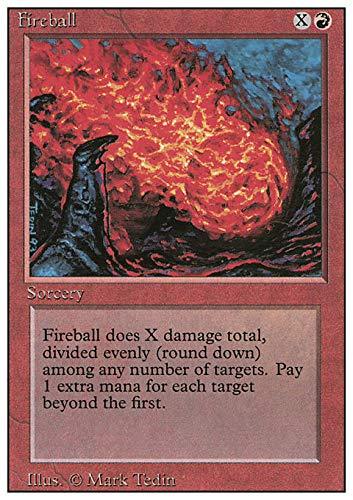
right there in the first set - variable cost for variable damage, 1:1. This spell is great for ending games, which makes up for it's poor rate for the time (see lightning bolt, where you pay 1 mana for 3 damage)
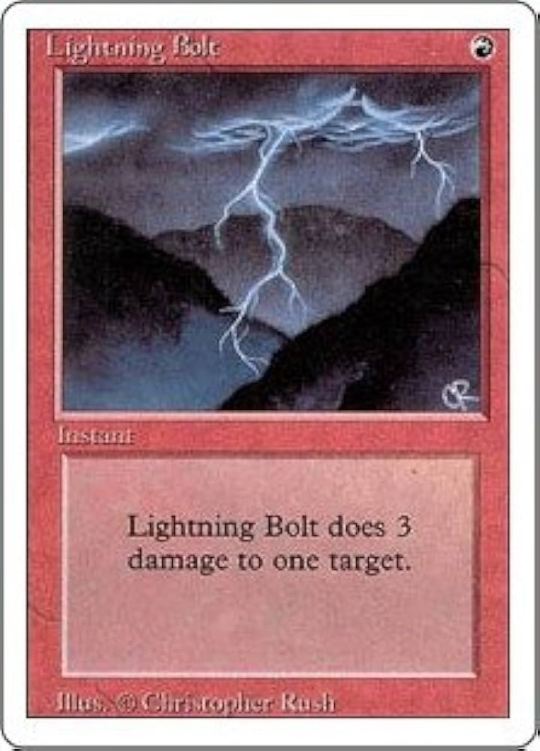
So now you can use X for the cost to give a linear scaling effect, such as additional counters on creatures
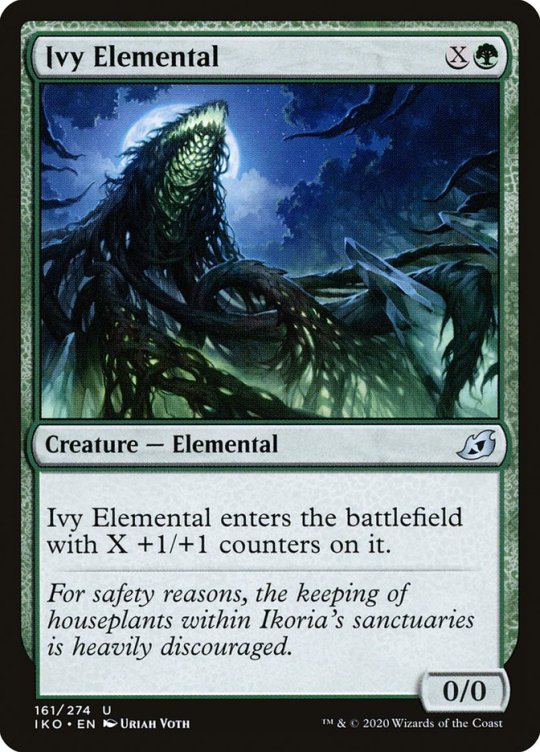
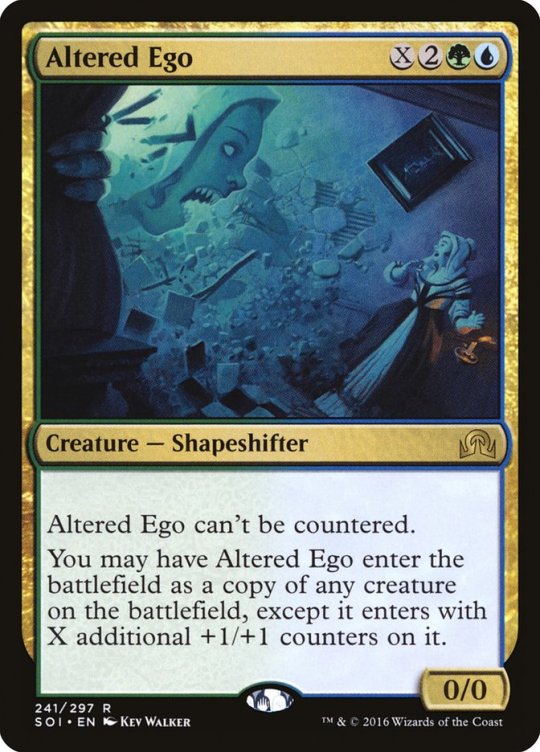
Where we get really mathsy next is the relatively few examples of effectively "do something X times, X times" for example:
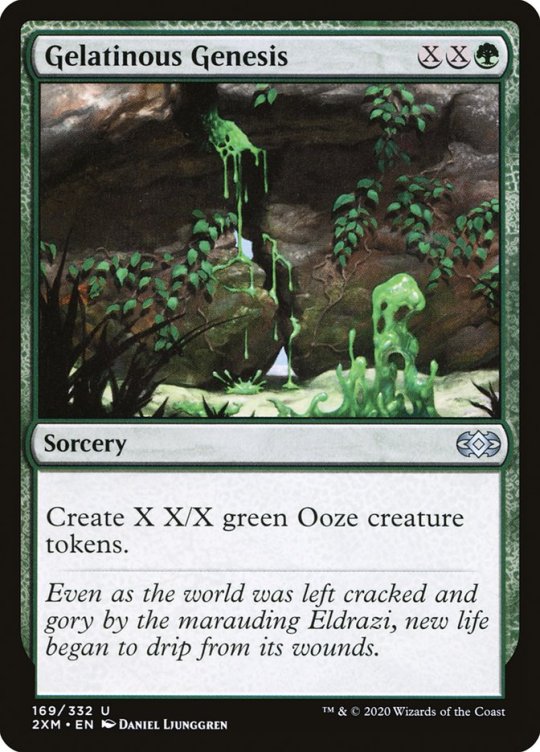
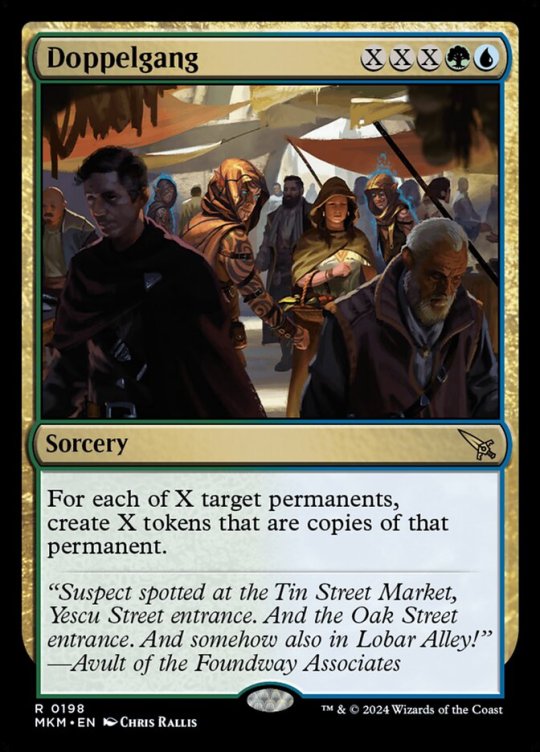
These two cards are roughly equivalent in what they do to the previous two - but appear to scale at a much worse rate, having to pay two or three times the cost for each time you do "X" but the trick here is these aren't actually scaling linearly, they're scaling quadratically, making them much more effective than they seem.
Anyway all this to say that sometimes evaluating how good a magic card can require understanding quadratic scaling!*
*but almost never will because these effects are almost certainly intentionally costed too highly and attached to traditionally uncompetitive effects, likely so that players don't actually have to think about quadratic scaling. This is probably for the best. Also there's one card that scales exponentially (2 to the power of X) rather than quadratically (X to the power of 2). It's literally called exponential growth.
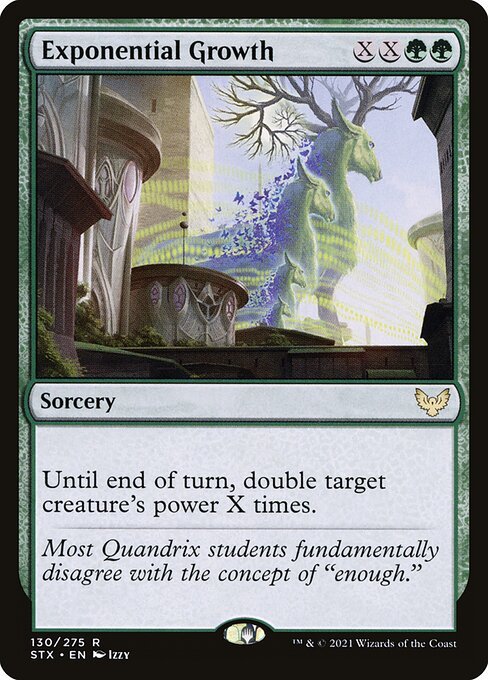
#mtg#magic the gathering#quadratic scaling#richard Garfield phd was a maths professor but maths guy gets the point across#exponential growth#maths#just throwing tags on here. hashtag whatever#i hope this auto does read more. sorry if this has taken forever to scroll past.
51 notes
·
View notes
Text
god all my recent listings on my website somehow have the fucking blurriest photos in the world. something in the upload is fucking compressing the shit out of my pictures because they are CLEAR and CRISP and ZOOM-INABLE on both my ipad & phone…. bigcartel you got a big storm comin (i sent them a message about it 😑) (can’t make me look like a FOOL with BLURRY PRODUCT PHOTOS)
#i went into the shop creator to look for an auto-scale or even suggested dimensions setting but there’s nothin#and none of my googling got me results either… maybe they’re nerfing me specifically…..#chatpost
5 notes
·
View notes
Note
The height chart gets even funnier when you consider that Rick gives Kirby piggyback rides. Kirby, that hamster is only up to your feet.


i think that for reasons to do with this the earth accurate sizes doesn't actually work very well when you try to extrapolate it out, and i did intend it as a joke!! it's funny and i enjoy it, but it falls apart the second you try to consider them functioning with others 😂
like... is kirby small enough to be comfortably piggybacked by hamster sized rick? then he's too small to be held in coo's claws, let alone to fit in kine's mouth! this would likely be the case even if we just took kirby's "canon" size of 8-9 inches but plonked him in an earth accurate sizing for everything else
then, is king dedede a penguin accurate size (king penguin size: 85–95cm) or is he comparative to a human adult? either way, he'd be smaller than kine, as mola mola average 250cm tall (at least according to wikipedia. other sources say 300cm longs and up to 450cm tall) and easily dwarf humans here on earth.
or does dedede have to be comparative to kirby, who is comparative to rick, who is an 18cm tall hamster, making kirby probably 10cm at best, making dedede probably half the size of a king penguin though maybe closer to a blue penguin (45cm), meaning that kine could easily be up to ten times his height--
in general i kind of just prefer to size them comparatively, starting from kirby, and considering individual characters Bigger or Smaller. as much as i'd love to see an enormous semi-realistic sunfish kine basking happily in the ocean surrounded by tiny friends, i think that it's easier for me to work on a "kirby" size scale and consider them all aliens, at the end of the day 😂

this seems likely, given that female mola mola are apparently bigger than the boys! they can also supposedly spawn an absolutely mindboggling three hundred million (sorry. hang on. three HUNDRED million!?!?!?!?!) eggs at a time, so i hope you're all really really looking forward to seeing a Lot lot more of Kine around.
#you could work in a sort of 'kirby auto scales to his animal friends' mechanic i suppose. he's certainly been tinier before!#that could be enjoyable in a world building sense! you'd see many small items look BIG when you were with rick and vice versa with kine!#but i'd feel bad assigning enormousness to kine! he'd be quite difficult to get into just about any location and he's already a bit of a#dare i say#fish out of water#definitely fun to play around with in individual circumstances but hard to work into a broader world-scape. not impossible though!#asks
28 notes
·
View notes
Text






1948 Ford Super Deluxe Convertible Coupe
Issued by Auto-Buff Models. It is 1:43 scale and crafted in white metal. The model was built by Wayne Moyer and is from his collection. It is finished in Maize Yellow.
5 notes
·
View notes
Text

basic threshold png of the first badge from this post.
#I really love this design. wanna make a shirt with it purrhaps.#I started trying to make a vector out of it but couldn't quite figure out a pleasing way and I'm tired now so I'll try again tomorrow maybe#anyone have any suggestions for how to get a clean smooth vector out of this? the low resolution is a bit of an obstacle.#I might try scaling up the original image by some method then thresholding it and auto-tracing the result of that. idk.
49 notes
·
View notes
Text






When I can't drive yet, I already have a mini garage of my own haha, which has a mechanic, an engine, and a vintage garage with glued so many nice pictorials. This garage is 1:64 real scale, 1:64 American-style garage miniature scene model.
#Nostalgic Garage#Miniature Model Scene#Miniature Garage Scene#Garage Collectibles#DIY Garage Model#Auto Repair Miniature#1:64 Scale Garage'American-style Garage#Car Tuning#Garage Decor#diorama#miniature
3 notes
·
View notes
Text

#trevor philips#gta 5#doodle#scrapbook#scribble#quick sketch#small scale#drawing#sketch book#figure drawing#character drawing#grand theft auto#rockstar games#gaming
18 notes
·
View notes
Text
Book Your FREE Consultation (619) 661-1888 Ext. 201 / 206. for Best Certified Scale Service in San Diego

Introduction
If you're a truck driver, fleet operator, or logistics manager, you know the importance of keeping your vehicle weight in check. Whether it’s for compliance, safety, or efficiency, working with a Certified scale service in San Diego is non-negotiable. That’s where Truck Net LLC comes in a trusted name for delivering precision, professionalism, and peace of mind.
With a legacy of excellence, Truck Net has carved out its space as the Best Certified scale service in San Diego and beyond. And guess what? You can Book Your FREE Consultation today at (619) 661-1888 Ext. 201 / 206.
Why Certified Scale Services Matter
In the trucking and transport industry, weight matters a lot. Overloading doesn’t just damage vehicles; it can cause accidents, violate DOT regulations, and lead to expensive fines. With Certified scale service in San Diego, you’re getting:
Accurate, legal-for-trade weight measurements
Compliance with California and federal regulations
Proof of weight tickets for freight contracts
Confidence that your operations are running smoothly
Truck Net, LLC – One-Stop Truck Stop in San Diego County
When it comes to a full-service truck center, Truck Net is the go-to choice in the region. It’s more than just a weighing station it’s the ultimate destination for professional drivers who value speed, accuracy, and customer care.
Here’s what sets Truck Net apart:
Best Certified scale service in San Diego county
Fast and reliable truck weighing with digital accuracy
DOT-certified staff and calibrated equipment
Competitive pricing with no hidden charges
24/7 service availability
Convenient location for quick drive-in access
What Makes Truck Net the Best Certified Scale Service in California
1. Certified Accuracy
Truck Net operates fully certified scales, approved by both state and national regulatory bodies. These scales are regularly calibrated and tested to ensure precision with every load.
2. Expert Technicians
Their team is made up of trained and certified experts who understand the importance of compliance and customer satisfaction. Whether it’s a single truck or an entire fleet, you're in capable hands.
3. Comprehensive Truck Services
Truck Net isn’t just about weighing. It’s a full-service center offering everything from repair and maintenance to rest stops for long-haul drivers. It’s a one-stop-shop for every trucker’s need in San Diego County.
Free Consultation – How to Book
Getting started is simple. Just call (619) 661-1888 Ext. 201 / 206 to Book Your FREE Consultation and discuss your needs with a professional.
Whether you’re new to San Diego or a regular on the route, Truck Net’s experts will help guide you on the best solutions for your trucking operation.
Serving All of San Diego County and Beyond
No matter where you are in Southern California, Truck Net’s strategic location and unmatched services make it the smart choice. Businesses across the region rely on Truck Net for:
Weighing individual trucks or entire fleets
Re-certification of equipment
Digital reports and proof of compliance
Speedy turnaround to keep drivers on the road
Truck Net Supports All Types of Drivers
From long-haul freight drivers to RV travelers, Truck Net provides the Best Certified scale service in San Diego for:
Professional Truck Drivers
Fleet Managers and Logistics Firms
Owner-Operators
Leisure Drivers with RVs and trailers

Why Choose Truck Net Over Other Scale Services?
Precision – Truck Net’s scales are rigorously maintained and certified.
Convenience – Easy drive-in access and minimal wait times.
Affordability – Transparent pricing with zero surprise fees.
Reputation – Known as the Best Certified scale service in California.
Customer Service – Friendly staff that’s always ready to assist.

Top Benefits of a Certified Scale Service in San Diego
Stay Compliant with DOT Regulations
Avoid Overloading Fines
Improve Road Safety
Ensure Accurate Freight Rates
Gain Trust from Clients and Carriers
Real-Life Scenarios Where Truck Net Made the Difference
Imagine hauling a load across state lines and being pulled over for an inspection. With a certified weight slip from Truck Net, you’re covered. Their accurate weighing services have saved countless clients from expensive fines and delays.
Testimonials from the Road
“Truck Net is the only place I trust for accurate weighing. Their team is friendly, fast, and always professional.” – Mike R., Owner-Operator
“We send all our fleet drivers to Truck Net. Their service is unmatched and the team really knows their stuff.” – Logistics Coordinator, San Diego
“I was new to hauling trailers with my RV and had no idea how weight limits worked. Truck Net walked me through it all.” – Carla M., Leisure Driver
Conclusion
Choosing the Best Certified scale service in San Diego isn’t just about ticking a box it’s about protecting your business, your vehicle, and your bottom line. Truck Net LLC offers trusted, certified, and efficient weighing services to keep you safe, legal, and on the move.
Don’t risk fines, delays, or unsafe loads. Call now to Book Your FREE Consultation at (619) 661-1888 Ext. 201 / 206 and experience the gold standard in truck scale services.
FAQs
1. Are the Truck Net scales certified by the government?
Yes, Truck Net’s scales are certified and comply with both California and federal standards.
2. Can I get a printed weight ticket for legal use?
Absolutely! Truck Net provides official weight tickets that are valid for inspections, contracts, and regulations.
3. Is the consultation really free?
Yes, just call (619) 661-1888 Ext. 201 / 206 to schedule your free consultation.
4. Do I need an appointment, or can I walk in?
While appointments are preferred, walk-ins are always welcome at Truck Net.
5. What else does Truck Net offer besides scale service?
Truck Net is a full-service truck stop offering repairs, maintenance, rest areas, and more for all types of drivers.

Truck Net LLC
8490 Fountain Avenue, San Diego, CA 92154 CALL US: (619) 661-1888 Ext. 201 WORKING HOURS: Monday to Sunday: Open 24 hours Visit our website: https://www.trucknetllc.com/service/scale-3
#Truck Washing services in San Diego#Duty Free Fuel in San Diego#Truck Parking in San Diego#Ultra-low sulphur diesel in San Diego#Duty Free Fuel in California#Truck Lube in San Diego#Duty Free Diesel in San Diego#Truck wash in San Diego#Low Sulfur Diesel in San Diego#Commercial Truck Parking in San Diego#Best Ultra low sulphur diesel in San Diego#Truck storage yard San Diego#Truck washing services in California#Best Truck Parking Station in San Diego#Best Truck wash in California#Best Truck Parking Station in California#Best Truck wash in San Diego#Best truck stop services in San Diego#Truck and auto storage yard California#Truck Parking station in California#Best Truck stop in San Diego#Commercial Truck Parking in California#Certified scale service in San Diego#CNG Station in San Diego#California#Truck washing services in San Diego California#Best Certified scale service in San Diego#Truck and auto storage yard San Diego#Truck Parking station in San Diego#Best truck parking station in San Diego
0 notes
Text
Il parcheggio multipiano
Quante volte abbiamo usato un parcheggio multipiano? Questa tipologia di parcheggio è, in generale, presente nel centro delle città, dove le aree edificabili sono molto costose ed è obbligo realizzare un parcheggio multipiano sviluppato in altezza (fuori terra) o in profondità (interrato). In alcuni parcheggi multipiano fuori terra di non recente costruzione l’ubicazione sia degli ingressi e…
#ascensori#auto#casse#ingresso#ingresso pedonale#parcheggio#parcheggio interrato#parcheggio multipiano#parcheggio vuoti terra#percorso#piano#scale antincendio#uscita
0 notes
Text
Global warming so atrocious it was fucking 80 degrees Farenheight a few days ago
Christmas is in like 3 days
We’re not just cooked, we are actively cooking (the planet alive)
#auto’s insanity#probably has something to do with#the richtor scale bombs being dropped#in the middle east#im just about done#being hopeful about it
1 note
·
View note
Text
I wish i knew how to actially code/ make text to speech voices because i would LOVE to have a good multi-lingual speech engine. Rhvoice generally is good for what i use it for, but punctuation doesn't tend to affect tone much (if at all), and there's only an option to let voices approximate english (not any other language).
Also rhvoice doesn't have a very wide range of voices for most languages anyways.
It'd just be nice to have an open source, free, speech engine for android, that also isn't difficult to contribute voices to. (Partially because i want belarusian tts to use on my phone for aac & such...... lol)
#100% секретный дневник левы НЕ ЧИТАЙ#like yes AI Bad but if there was like... a small-scale ethical way to auto-generate languages based on audio files that would be great!#also like. maybe something similar to how you make utau voices? but for tts?! i'd love that! i just.... cant code that way :(
0 notes
Text
Scaling Azure Container Apps for Peak Performance
In our last blog, we dove into optimizing deployments with Azure Pipelines, covering strategies for choosing the right agents and securing environment variables to ensure smooth, reliable updates. Now, let’s take things a step further. Once you’ve streamlined your deployment pipeline, the next challenge is making sure your Azure Container Apps can easily handle fluctuating demands. In this final…
#auto-scaling#azure best practices#Azure Container Apps#azure monitor#cloud cost optimization#cloud scaling#container app scaling#dynamic scaling#KEDA#responsive applications#scaling in azure
0 notes
Text
What's new in Azure app service at Build 2024: Key announcements and features

The integration with the Visual Studio improves the development and deployment process of the services and the cooperation with Nvidia and AMD as hardware partners brings high-performance hardware to boost the AI offerings. Read More. https://www.sify.com/technology/whats-new-in-azure-app-service-at-build-2024-key-announcements-and-features/
#AzureAppService#MicrosoftBuild#MicrosoftAzure#Auto-Scaling#SidecarContainers#VisualStudio#Nvidia#AMD MI300X
1 note
·
View note
Text
Octave.
/
PART A: SOUND
'Pitch' in music refers to the highness or lowness of a sound, which is measured in hertz.
Pitches are named in music by using the first seven letters of the alphabet: A, B, C, D, E, F, and G.
If you arranged all the sound possible within the range of human hearing from low to high, it would be from around 20 to 20,000 Hz, give or take variations per individual.
To give an idea of what part of this range is used for music, see the following examples:
1. The piano has 88 keys which span the frequency range 27.5 Hz (at lowest key A0) to 4186 Hz (to highest key C8).

Pictured below shows every note on the piano within a range of 50 – 400 Hz, giving the associated frequency value for each musical note.

2. Voice. Almost all singing voices fall into one of six categories:
Soprano is the highest vocal type. They typically have a range from C3 (130.81 hz) to C6 (1046.502 Hz/High C), and some can go up to G6 or down to B3.
Mezzo- Soprano. This vocal type is the most common for females. They have a range from A3 (220 hz) to A5 (880 hz). Some mezzo-sopranos can reach as far down as G3 or up to C6.
Alto: Contralto or alto is usually the lowest female vocal type. They most often have a range from F3 (174.61 hz) to F5 (698.46 hz). Some contraltos can reach down to D3 or as high as A5.
Tenor is usually the highest male vocal type. They most often have a range from C3 (130.81 hz) to C5 (523.25 hz), but some tenors can go as far down as B2 or up to F5.
Baritone is typically the mid-range for males and their most common male voice classification. They generally range from G2 (98 hz) to G4 (392 hz), but some can dip to F2 or reach C5.
Bass is the lowest vocal type, ranging from E2 (82.41 hz) to E4 (329.63 hz). Some bass voices can drop to C2 or stretch as far up as G4.
(Here's where you can test your own vocal range and here's where to find the hertz measurement thereof)
3. Violin. The violin's lowest note, G3, is 196 Hz while E7, the highest practical limit of the violin, is 2,637 Hz. A7, the highest actual note, is 3,520 Hz and D8 played using artificial harmonics is 4,698 Hz. The range for string family here slowly expands downwards moving to Viola (130 Hz – 1.8 kHz), Cello (65 Hz – 1.0 kHz), then Double Bass (range: 41 – 392 Hz).
[AUDIO HERE]
4. Erhu. “Full range: d1 to a3; practical range is d1 to d3; best sounding range is d1 to a2; From d#3 and above the instrument is very difficult to intone and has a weak dynamic. Useful only by virtuosi and in very transparent passages.”
5. Setar. “The setar is used mainly to play Persian classical music, called Dastgah. This instrument is played with the tip of the index fingernail, by strumming up and down. Its fingerboard usually has twenty-five adjustable gut frets, which provide the fundamental frequency range of 131 Hz to 831 Hz (two and a half octaves).”
6. Guitar. The range of frequencies across all types of acoustic guitars (small classicals to large-bodied steel strings), runs from roughly 80Hz to 300Hz.
/
Nowadays, the range of potential pitches in which we make music can now be marked out in hertz (of the pitch, skipping over harmonics and overtones which do come into what constitutes a note for some styles of music,) but how we determine what is a playable range of specific pitches as demarcated in modern musical notation is actually determined by the intervals between these pitches within an octave (even if the staff is visually arranged for the diatonic scale, why explained later.) A selection of these pitches are then made into scales, which can be described as the pallet of notes (scales are labelled for both a) the intervals between these notes or b) the number of notes in what would be considered a scale) that we make music for a song from. But before selecting what kind (and then perhaps key, if applicable) specific scale is used for a piece of music, how do we now determine the complete range of pitches a scale can be made from? Nowadays, the most common system used is: Equal Temperament. (Many arguments on the internet revolve around the concept of ET and the insufficient universality of the diatonic scale, which I think is sometimes interesting and sometimes not.) But the first thing to know about ET is that the reason behind why there are 12 semitones in an octave is because of Just Intonation.
/
PART B: JUST INTONATION
Currently- off of memory, (will edit later as I uncover more books from around the house,) our current system of measuring intervals within an octave (12TET) is in fact a system centered around the existence of the interval called the octave, (though not every music tradition uses or groups notes within octaves, it persistently exists as a matter of consonance. Some Greek sources measured a scale in a tetrachord, or to the P4 interval, but an octave is two identical tetrachords with a whole step in between them. Later notation in hexachords were suitable for 11th century monk music but were regularly extended into four chord intervals- which is essentially an octave.) The octave is a “natural phenomenon” even when it wasn’t a notated one. Today an octave is defined conveniently in hertz as: “the distance between one note and another note that’s double its frequency. For instance, the note A4 is the sound of a vibration at 440 Hz. The note A5 is the sound of a vibration at 880 Hz. Going in the other direction, the note A3 is the sound of a vibration at 220Hz.” Logarithmically, the frequency doubles per octave going up. A3 and A4 are different pitches, but considered the same “pitch class,” which would be all possible As whatever octave position. (The term pitch class is a part of music set theory, which is apparently related more to group theory and combinatorics but I need the term.)
The interval of an octave (first two notes):
[AUDIO HERE]
In terms of describing an octave before hertz: Two notes with the interval of an octave between them are two notes that are identical relative to themself - and any interval that is expressed within one octave can transposed to be repeated exactly the same type of interval in another octave.
Just Intonation, which came before hertz, is more or less an enduring ancient practice of tuning according to the ratio of a fundamental pitch within an octave. "Pythagorean tuning," (another type of just intonation dividing notes within an octave by focusing on how fifths and thirds produced resonance,) is based off of stacking notes within an octave according to ratios based exclusively on perfect fifths, (which sounds better to me and does pop up frequently across cultures, but is also taken advantage of as intentional disharmony as the scale cycles up in beatles songs, for example. [AUDIO HERE] (maybe expand this) but both of these styles of arranging notes within an octave result in slightly different and imperfect ratios between certain sets of intervals, but also use same amount of pitches within an octave (which is seven, not including the last note.) (This does not apply to some styles of music but afaik is used as common reference in notation.) (I’ll put in more specific examples later.)
This style of ratio-based intervals based off of fifths and octaves (researchers have determined by measuring ratios of length of strings in harp like instruments) seem more or less referenced across cultures, even if the 7 notes are not exactly in the same exact hertz per interval, or even are considered a range of notes in a scale, or with the same modern usage of key. The matter of the hertz measurement of Equal temperament not being exact for certain songs applies even within scales for any song in western canon, because Equal Temperament is meant to be used as an approximation for various common and shifting just tunings in the same way 365 days is technically an approximation for the exact length of a year.
The exact measurement of this “smallest interval” in Equal Temperament, based off of accommodating this reoccurring pattern with a mathematical compromise, divides the notes within an octave into twelve equally spaced intervals called "semitones," or "half-steps," measured by building up 12 notes from a single ratio, which is then further split by cents, which becomes relevant in more specific analysis of scale for more complicated music.
What this perfect division of 12 semitones within an octave means is that only the octave is "just," and the ratios for any other tuning within are no longer exact for any style of just tuning. (This has a history, I'll post about it later if time allows.) Though ET doesn't guarantee exact tuning, and isn't meant to, it does guarantee that all music can realistically be notated and read on a staff. It also ensures an instrument doesn't have to be completely retuned every time a song in a slightly different key is played.
It’s generally acknowledged that when people sing and/or play string instruments together, they tune to a subtle variation of Just Intonation, where not only strings but chords are unconsciously tuned according to a more pleasing harmony/ratios to eachother- which is just off of ET by a few hertz.
This might be most noticeable in barbershop quartets, where major (primary triad) chords tend to ring more than minor and tuning relies on harmony- which influences common song selection and sound of what you think of barbershop quartets and logically, monk choirs. (may conveniently explain why ionian is usually taught first.) (I should check this before saying it but it is really hard to harmonize songs in certain modes + keys and I don’t think it’s my imagination. Key seems to matter more.)
Between an octave on a piano, all 12 adjacent key (including the black keys) within are divided by the interval of a half step, and playing every half step in an octave is called the chromatic scale.
[AUDIO HERE]

(b is flat, which means down a semitone, and # is sharp, which means up a semitone. What this means is that C# and Db is the same note, which is what is referred to as an enharmonic. The reasons for these overlaps in naming conventions are both historical and sometimes useful (indicator of a type of resolution or sound or technique) but really don’t matter right this second.)
But in either method of measure, an octave is 12 semitones. So what is the interval of a fifth?
/
PART C: RATIO
If there are only 12 semitones (or their approximates) to start on within an octave before the frequency repeats and you are starting on functionally the same 12 semitones by this measure, there are a limited number of "consonant" or (especially when tuned ratio proper "just") pitches within this range. - and harmony is more than presumption, it reoccurs- especially in fifths.
In tonal music, some harmonic intervals are considered to be consonant, whereas others are considered to be dissonant. The terms consonant and dissonant can be defined roughly as meaning pleasing to the ear and not pleasing to the ear, respectively, but these are very dependent on context.... All major and minor thirds and sixths and perfect 5ths and 8ves are consonant. All other harmonic intervals, including all augmented and diminished intervals, are dissonant. An exception is the P4, which is considered dissonant in tonal music only when it occurs above the lowest voice (also called the bass, in both vocal and instrumental music.)
However, for the duration of this post, I am not referring to these definitions in the vertical harmony in a chord, which I’m not sure were visualized as such in cultures that developed scales, including Ancient Greece (famous for emphasizing harmonic intervals,) until Daseian notation, but how people across cultures also construct consistent scales for music that sounds consonant and consistent to them. (It’s more accurate to define "dissonant" as "full of tension," or "less settled," rather than saying "displeasing." historical renaissance definitions aside.) Anyway, for talking about Greek harmony “tradition” in scales, I only care about two intervals: the octave and the fifth; an interval consonant across cultures, that nobody needs a specific music theory background to gravitate to or include in melodic music. Formally, a fifth is 7 semitones up from it's root note (tonic/key is the first note of whatever octave being used, root note is the type of the chord, usually the bass/lowest note in a triad chord).
The interval of a fifth:
[AUDIO HERE]
/
PART D: TONE ROW/SCALE
Once you have 1) the interval of 12 semitones within an octave (even if the size of these “smallest” intervals were originally identified or recreated by ear or the mathematical length of a lyre when used consistently in a culture’s music) into 12 pitch classes, and 2) the interval of a “consonant” fifth- the rest of the “tone row” or “scale” writes itself.
In the history of Western notation, the now most commonly used scale, is the Diatonic scale, the pattern of 7 notes within an octave. But why these 7 pitches at what pattern of intervals chosen out of 12 possible pitches (that it created the intervals within an octave necessary to determine for in the first place?)
Historically, there are a few independent ways that this scale probably developed to it’s current understood state, but here's the most convenient one in terms of measuring pitch and interval. All 7 pitch classes of the diatonic scale can be reached by stacking a chain of six “fifths.” This means- starting from any pitch class- any frequency- moving up 7 semitones six times will land more or less on 7 different pitch classes before looping back to start again on the original starting pitch class and repeating.
For visual example- starting from F: (including the first letter as one count five letters up)
F-C-G-D-A-E-B (then a fifth up would loop back to F)
(you can also try any note the exact division in cents seems arbitrary and has an unclear history to me. In terms of pure ratio, the pythagorean tuning is: C - G - D - A - E - B - F#(Gb) - C#(Db) - G#(Ab) - D#(Eb) - A#(Bb) - F - C with the comment: Well, the top C is a little off, but we can just contract it (by 24 cents, called the Pythagorean comma) and it's pretty much perfect. The only problem with Pythagorean tuning is trying to move to different keys on the one instrument. If you change key without retuning your harpsichord, that Pythagorean comma is going to pop up in a different place of every scale. Not fun.)
Anyway, when simplifying the interval pattern on 12TET, and flattening F and C by a little, and putting the resulting pitch classes are put together within an octave, no matter which note is considered first- this forms what is called a “diatonic scale."
You may have heard the diatonic scale in it’s format presented most basic to kids as the Major scale (which is actually the Ionian mode (which means “interval pattern” of the 7 notes of the diatonic scale)) as Do Re Mi.
The interval pattern of the Ionian mode of the diatonic scale is: (W -W -H - W - W -W -H)
(a whole step/tone is two half steps/semitone intervals put together.)
[AUDIO HERE]
The diatonic scale, ionian mode pictured on a piano here starting on C:

And so- as the “diatonic scale” is a series of intervals between seven notes (a circle of fifths, even,) the “mode” or pattern of intervals on the scale change depending which of the seven positions, or “degrees,” that you start from.
If you use the mode/interval pattern that starts on the first degree- (afaik arbitrarily labelled as such, probably notable because it has the easiest and most likely to “ring” chords (M3 P5 interval from tonic) in harmony if this mode is used as home base for the song,) it is called Ionian mode, also known as the Major Scale.
Starting on the second degree of the pattern: Dorian Mode has the interval pattern (W -H - W - W -W -H -W)
Third Degree: Phrygian (H - W - W -W -H -W-W)
Fourth Degree: Lydian (W - W -W -H -W-W -H)
Fifth Degree: Mixolydian (W -W -H -W-W -H -W)
Sixth Degree: Aeolian (W -H -W-W -H -W -W) (natural minor scale)
Seventh Degree: Locrian (H -W-W -H -W -W -W)
(Note each interval pattern is just the first note of the pattern shifting one degree up) And that’s every diatonic scale. (Even if in practice some of them get fudged into each other and are less commonly used in full truth, likely because of something like tritone resolution to primary triads.) If the interval for any part of this pattern is changed, (such as the harmonic minor scale, which is aeolian with a 7 raised a half step, or melodic minor scale, which is aeolian with the 6 and 7 raised a half step (descent is natural minor)), then the scale is no longer “diatonic.”
This is clearly not how all cultures describe their tone row, even if the emphasis of consonant fifths in ionian and pure force of stylistic habit enforcing minor scale + variations (i'll glance again at jazz theory) means that large portions of scales will likely directly reproduce in any culture with the emphasis on vocal and string instruments, which harmonize among seconds, thirds, fifths, octaves- and various tension/active notes -> triad resolves, of which every part of can't all just be culturally ear trained, basic relations will show up in any music that tries to develop compositions based on sound and mood rather than planned randomness, or so my theory goes.
Koron means down a quarter step.
NEXT: CHORDS, MAQAM and...
Canmom wrote about this more thoughtfully, I also want to explore my own thoughts on various things I have read over the years.
#music theory posting#ok that's good for basics i think#i'll put in audio later if this format survives#kind of thinking out loud#but also this should explain the scale parts of terminology#scale developed throughout history in groups of two three four five six seven eight twelve notes but none of them are as stable and easily#universal#sorry for chord slang this is meant to be reread#its like people auto approx fifths no matter starting pitch so something very unusual is going to span multiple octaves with fifths somehow#they also have harmonies outside of octaves with microtones or no focus on harmony at all BUT#tbc#scales developed kind of like a desire path afaict#or breaking up octave a little differently#i need to double check the history
3 notes
·
View notes